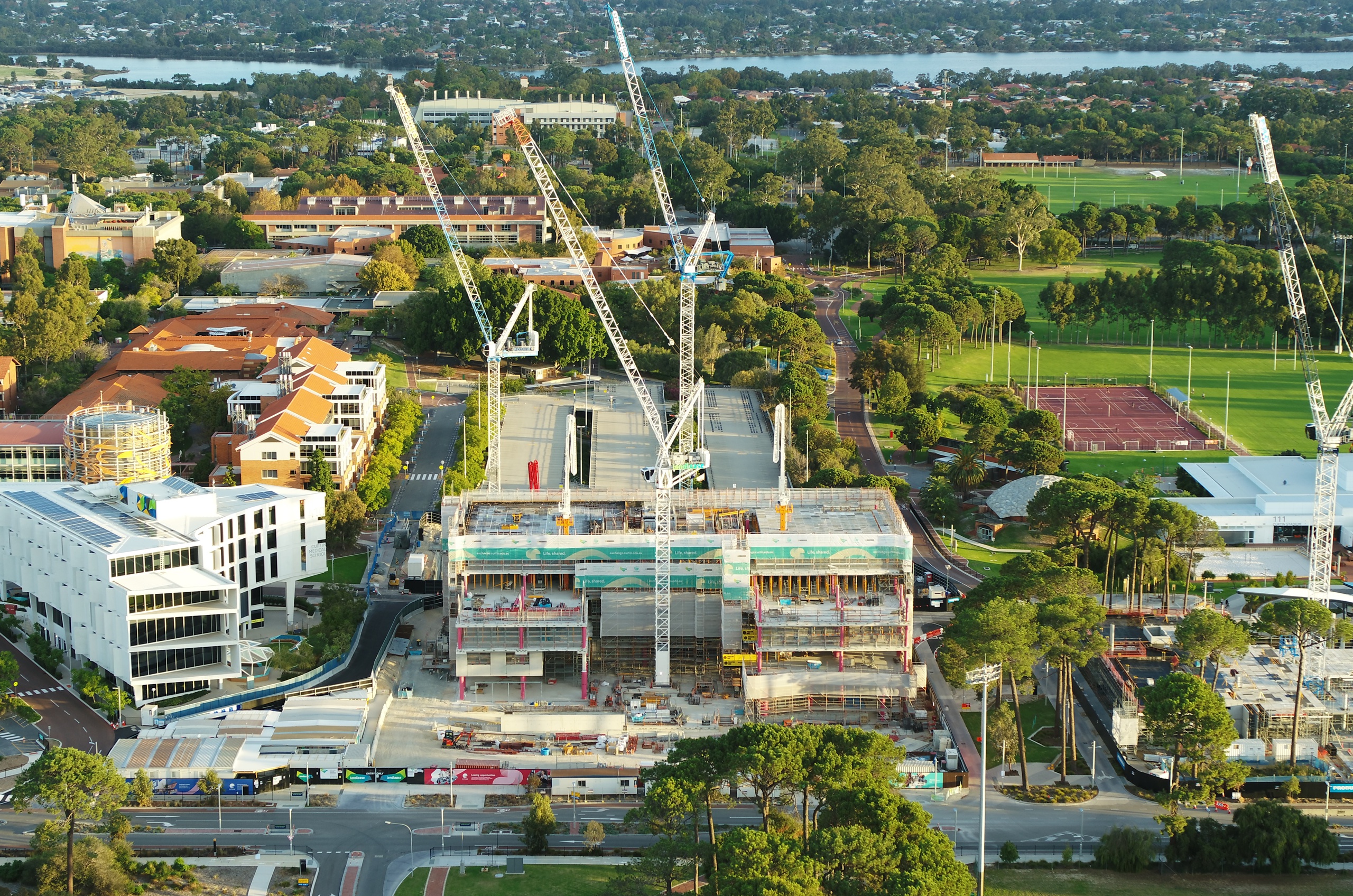It is little known that a Green Star-Communities project has to be recertified every five years during its construction to ensure that commitments made at planning and design stages are truly delivered. Perth’s Curtin University is one of few projects that have successfully pursued and achieved recertification, and it is the first Communities project ever to improve upon its Green Star rating in process, upgrading from 5 Stars in 2015 to 6 stars in 2020.
With a range of new initiatives embraced - like a driverless bus that transports students around campus, to the use of intelligent technologies to ensure all classrooms are used to their full capacity - it is no surprise that the project has achieved a new level of sustainability. But Rocio Bona, Director of Planning, Properties, Facilities and Development at Curtin University, credits the higher score to the small changes, as much as the big ones, “After the initial certification at 5 Stars we knew we were close, and our initiatives and strategies have only improved since then,” she says.
The redevelopment of Curtin University has been driven by the desire to transform the campus into a collaborative innovation precinct which will be accessible to not only staff and students but also the broader community of Perth. Bona says that since the project’s inception in 2012, “The masterplan was always designed with sustainability in mind.”
Curtin’s incorporation of the GBCA’s environmental initiatives don’t even stop with the Communities rating, in fact all new buildings on the campus hope to be individually certified with a Design & As Built rating of 5 Stars or higher.
Bona says Green Star was specifically chosen because it could be applied across different areas of the project, as well as the particularly unique “opportunity to track and endorse our sustainability initiatives… [with] independent third party verification.”

To Curtin’s credit, the pursuit of innovation has not compromised the recognition or preservation of the campus’ Indigenous heritage and the University jumped at the chance of integrating Indigenous heritage back into the fabric of the built environment. This can be found in the incorporation of indigenous knowledge into the broader design process, as well as the specific delivery of an outdoor venue for on country learning experiences known as the Yarning Circle.
Despite the challenges that have come from balancing significant construction works while maintaining a functioning university campus, the first stage of construction on an industry-connected innovation precinct, known as Exchange, is well underway, and a key transport hub has already been completed.
The smooth delivery of this project so far and the continuous improvement of environmentally friendly initiatives speaks to Curtin University’s commitment to its future as a sustainable institution. But this project’s success is also a testament to the flexibility of the Green Star rating system to accommodate and respond to changes made during all stages of the building process, whether that be design, construction or delivery.
Written by Eleanor Earl